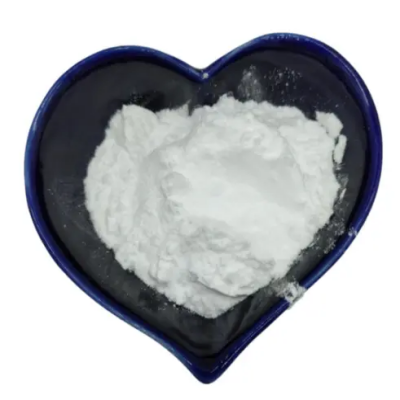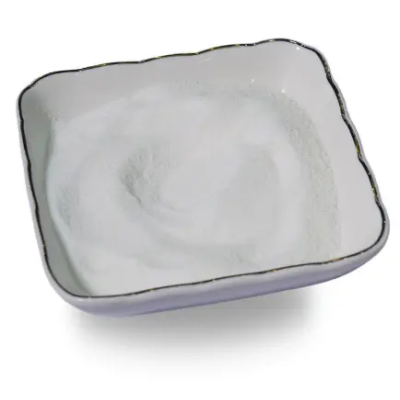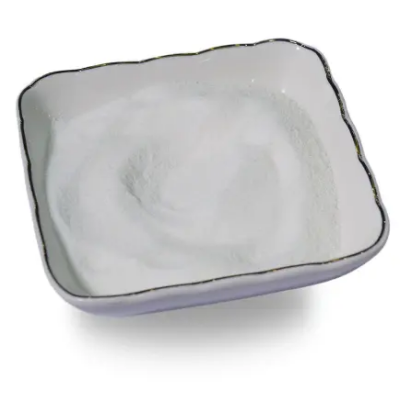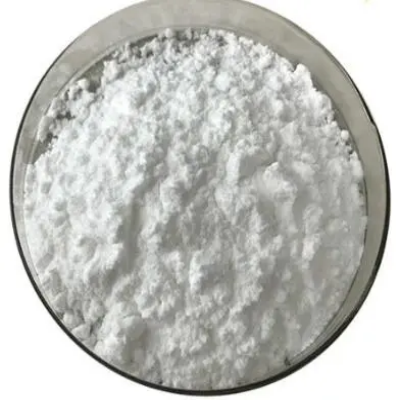(+)-(3r,5s), Tert-Butyl 7-[4-(4-Fluorophenyl)-6-Isopropyl-2-(N-Methyl-N-Methylsulphonylamino)-Pyrimidin-5-Yl]-3,5-Dihydroxy-6(E)-Heptenate (R1.5 Or T-Butyl-Rosuvastatin) CAS:355806-00-7
At the heart of the molecule is a pyrimidine ring, a six-membered aromatic ring with nitrogen atoms at positions 1, 3, and 5. The pyrimidine ring is a common structural feature in many biologically active compounds and is responsible for some of the therapeutic effects of rosuvastatin. Attached to the pyrimidine ring is a fluorophenyl group, an aromatic group that introduces a strong electron-withdrawing effect due to the presence of fluorine. This substituent can influence the chemical reactivity of the compound and its interactions with biological targets. The compound also features an isopropyl group, which increases the bulkiness and hydrophobicity of the molecule, potentially affecting its solubility and membrane permeability. The 3,5-positions on the pyrimidine ring are occupied by dihydroxy groups, which are polar and can form hydrogen bonds, contributing to the compound's solubility and interaction with biological targets. The 7-position of the heptenate chain is substituted with a 4-(4-fluorophenyl)-6-isopropyl-2-(N-methyl-N-methylsulphonylamino)pyrimidin-5-yl group. This substituent is a key part of the structure, as it is responsible for the compound's binding to HMG-CoA reductase, the enzyme targeted by statins to reduce cholesterol levels. The tert-butyl ester group at the end of the heptenate chain is a protecting group that protects the carboxylic acid moiety. Protecting groups are often used in organic synthesis to temporarily mask the reactivity of certain functional groups, allowing for the selective introduction of other groups without unwanted side reactions. The (R1.5) or (T-butyl-Rosuvastatin) designation refers to the fact that this compound is a tert-butyl ester derivative of rosuvastatin, a popular statin medication used for lowering cholesterol levels. Rosuvastatin works by inhibiting HMG-CoA reductase, an enzyme that plays a key role in the biosynthesis of cholesterol. The compound is likely to be of interest in the fields of organic synthesis and medicinal chemistry, as it can be used as a building block for the synthesis of more complex molecules, or it could be further modified to explore its biological activity. It is also a valuable intermediate for the development of new drugs and the study of biological processes.



| Composition | C26H36FN3O6S |
| Assay | 99% |
| Appearance | white powder |
| CAS No. | 355806-00-7 |
| Packing | Small and bulk |
| Shelf Life | 2 years |
| Storage | Store in cool and dry area |
| Certification | ISO. |


![(+)-(3r,5s), Tert-Butyl 7-[4-(4-Fluorophenyl)-6-Isopropyl-2-(N-Methyl-N-Methylsulphonylamino)-Pyrimidin-5-Yl]-3,5-Dihydroxy-6(E)-Heptenate (R1.5 Or T-Butyl-Rosuvastatin) CAS:355806-00-7 Featured Image](https://cdn.globalso.com/xindaobiotech/K@NIE7HBAEP6E7J7DS227.png)
![(+)-(3r,5s), Tert-Butyl 7-[4-(4-Fluorophenyl)-6-Isopropyl-2-(N-Methyl-N-Methylsulphonylamino)-Pyrimidin-5-Yl]-3,5-Dihydroxy-6(E)-Heptenate (R1.5 Or T-Butyl-Rosuvastatin) CAS:355806-00-7](https://cdn.globalso.com/xindaobiotech/K@NIE7HBAEP6E7J7DS227-300x300.png)





